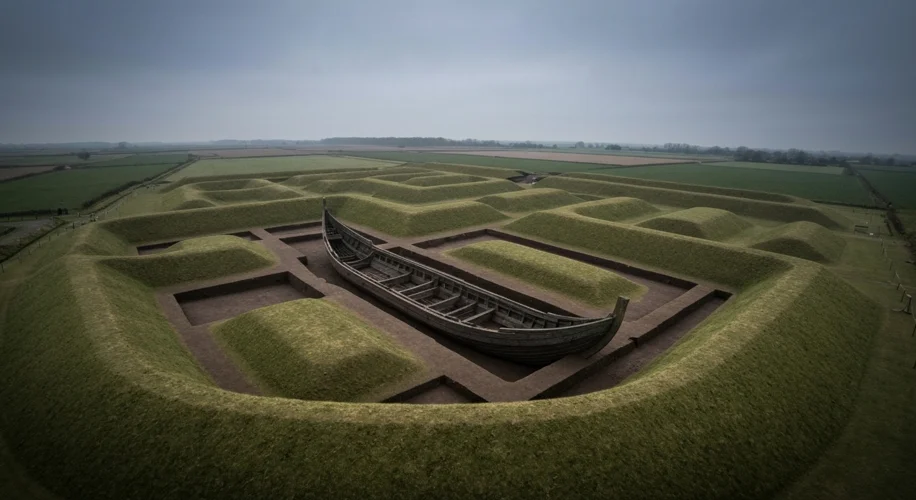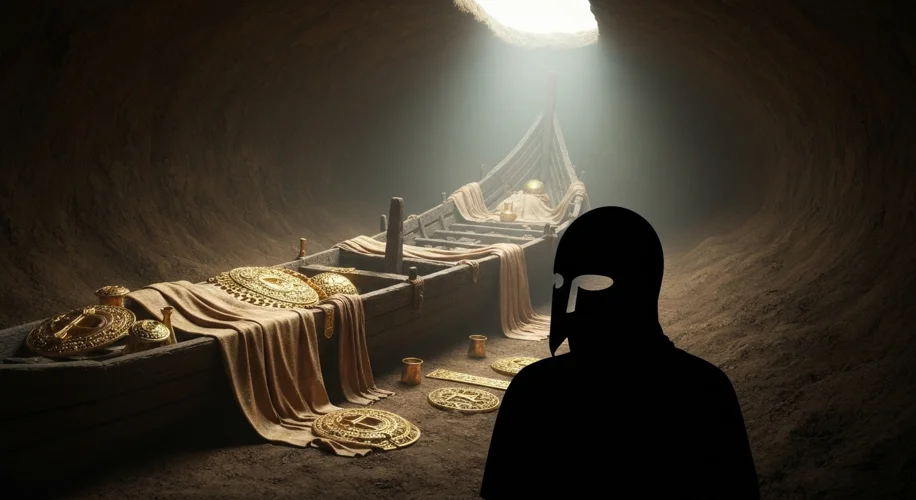For centuries, the period in Britain following the withdrawal of the Roman legions in the early 5th century AD has been cast in a gloomy, almost tenebrous light, often referred to as the ‘Dark Ages’. This narrative conjures images of a land plunged into chaos, literacy vanishing, and civilization regressing into a brutal, uncultured existence. But what if this popular perception is a distortion, a shadow cast by later accounts rather than the reality of the time?
The withdrawal of Roman authority in 410 AD left a power vacuum. Britannia, a Roman province for nearly four centuries, was suddenly left to its own devices. The sophisticated infrastructure, the intricate trade networks, and the administrative structures established by Rome began to fray. It’s easy to see why contemporary and later chroniclers, looking back with nostalgia for the Roman peace (Pax Romana), would view this transition as a catastrophic decline.
However, a closer examination of the archaeological and historical evidence paints a far more nuanced, and arguably more vibrant, picture. The narrative of a complete societal collapse is being challenged by a growing body of research that highlights continuity, adaptation, and the emergence of new cultural forms.
Consider the advent of the Anglo-Saxons. While their arrival is often framed as an invasion, it was, in reality, a complex process of migration and settlement. These Germanic peoples brought with them their own languages, social structures, and artistic traditions. Far from being a monolithic ‘invasion’, it was a gradual assimilation and transformation, leading to the eventual formation of the Anglo-Saxon kingdoms that would shape the future of England.
Archaeology has been instrumental in revealing the complexity of this era. Excavations across Britain have unearthed sophisticated settlements, intricate metalwork, and evidence of continued trade with continental Europe. The discovery of richly furnished burial sites, such as Sutton Hoo in Suffolk, reveals not a society in decline, but one with a complex social hierarchy, a sophisticated understanding of craftsmanship, and a vibrant artistic sensibility. The intricate gold work and exquisite craftsmanship found at Sutton Hoo, dating to the early 7th century, speak to a society with skilled artisans, established trade routes for luxury goods, and a ruling elite with significant power and wealth.

Literacy, often cited as a casualty of the ‘Dark Ages’, also saw a different kind of resurgence. While the Latin literacy of the Roman elite may have diminished, the arrival of Christianity from the continent, particularly through figures like St. Augustine of Canterbury in the late 6th century, ushered in a new wave of literacy, albeit in a different script and language. Monasteries became centers of learning, preserving ancient texts and fostering the development of new literature, such as the epic poem Beowulf.
The term ‘Dark Ages’ itself is problematic, largely a product of later Renaissance scholars who sought to contrast their own perceived enlightenment with the preceding centuries. It reflects a bias towards classical learning and a dismissive attitude towards the cultures that emerged in its wake. Modern historians and archaeologists prefer terms like ‘Early Medieval Period’ or ‘Post-Roman Britain’ to avoid the loaded connotations of ‘darkness’.
Instead of a period of regression, the post-Roman centuries in Britain were a crucible of change. It was a time of adaptation, of the blending of Romano-British and Anglo-Saxon cultures, and the laying of foundations for the medieval kingdoms that followed. The resilience and creativity of the people who lived through this transition are increasingly coming to light, revealing not a ‘dark age’, but a period of profound transformation and innovation.
It’s a reminder that history is rarely as simple as a stark narrative of light and shadow. The so-called ‘Dark Ages’ of Britain, when viewed through the lens of careful archaeological investigation and nuanced historical interpretation, begin to gleam with a different kind of light – the enduring human spirit of adaptation and creation in the face of immense change.

